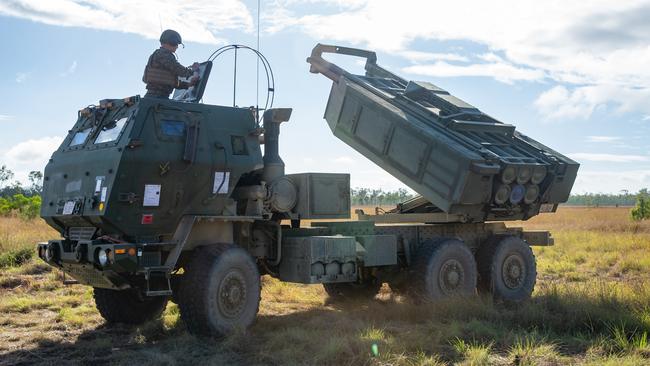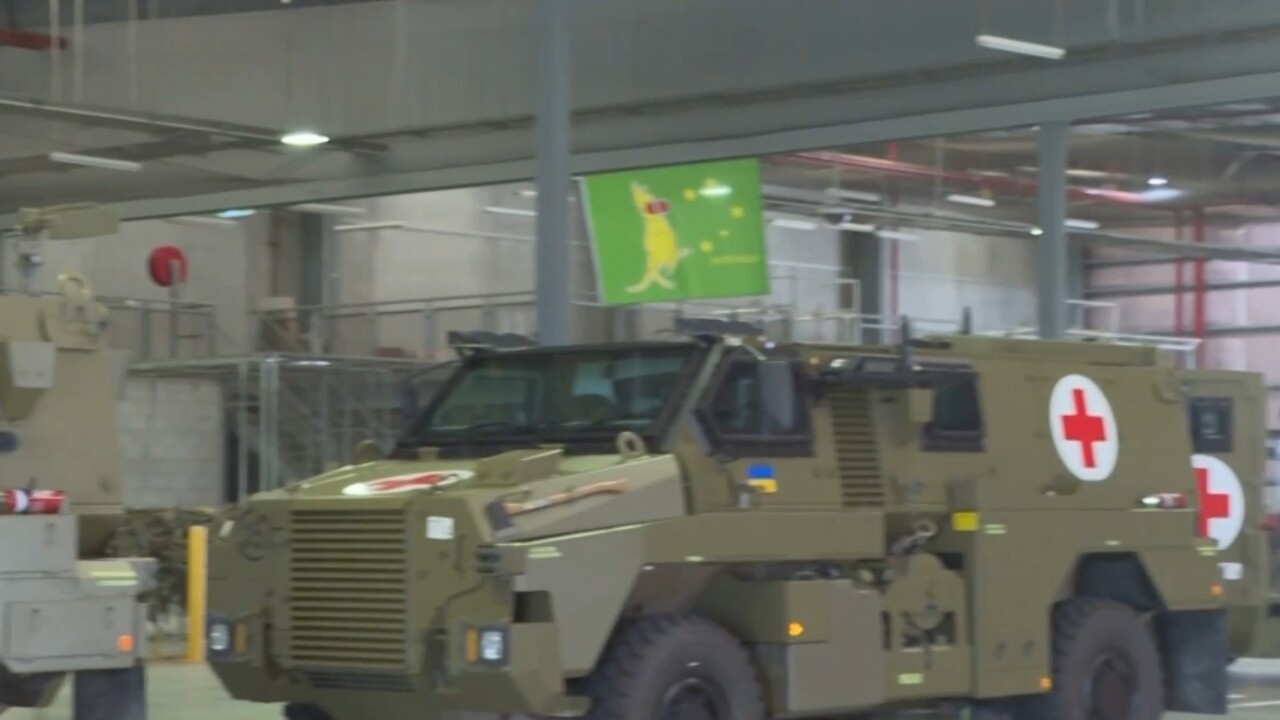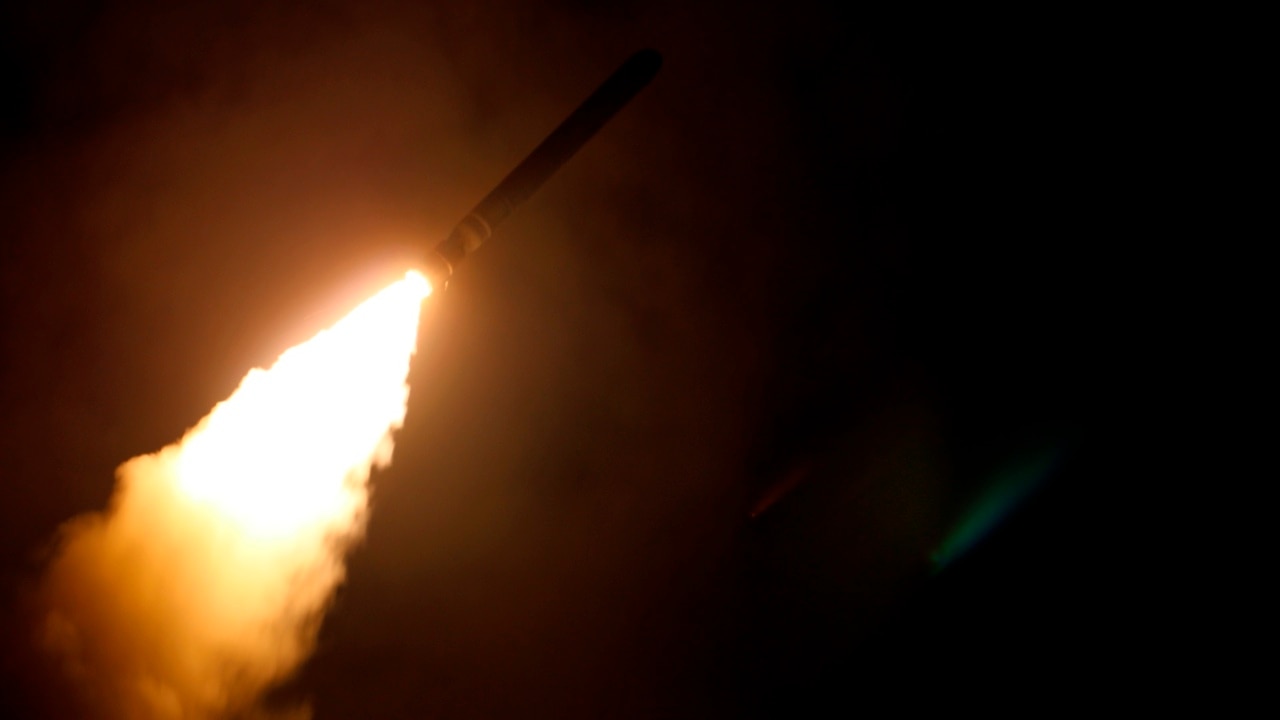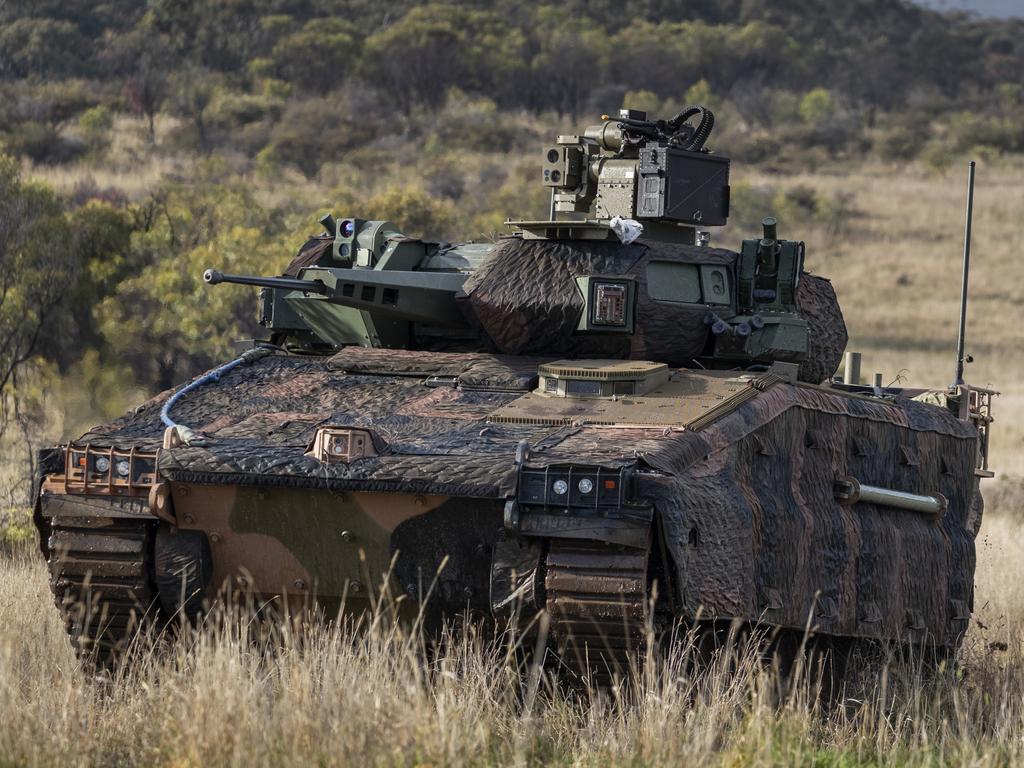Australian Army to acquire US-made HIMARS missile systems in new $1bn deal
In massive firepower upgrade, Australia signs deal for US-made HIMARS missile systems, which have been crucial in Ukraine.

The Australian Army will get its biggest firepower upgrade in a generation under a new contract to acquire US-made HIMARS missile systems, which have been decisive in Ukraine’s ability to repel Russian forces.
The Albanese government has signed a contract to acquire 20 of the truck-mounted, Lockheed Martin-designed systems by 2026, and another to acquire the Norwegian-made naval strike missile for the navy’s key surface ships by next year.
The $1bn in arms purchases will give the Australian Defence Force two of the world’s most capable guided weapons as it scrambles to acquire new long-range capabilities to deter would-be aggressors.
The announcement comes just days after Ukrainian forces used US-donated HIMARS rockets to kill at least 89 Russian soldiers, and potentially up to 400, in a devastating New Year’s Day strike.
The missiles provided to Ukraine have an 80km range – limiting its ability to strike inside Russia to guard against the possibility of a nuclear response.
Australia will receive longer-range army tactical missiles which can accurately hit targets up to 300km away – a dramatic improvement on the army’s conventional howitzers, which have ranges of up to 40km.
In the future, the HIMARS launchers will also be able to fire next-generation precision strike missiles, which have an advertised range of up to 499km.
“This is the greatest enhancement to the army’s strike capability in living memory,” Defence Industry Minister Pat Conroy told The Australian.

“We‘re going from the army having land strike capability measured in the tens of kilometres to a strike capability when it’s deployed in service of up to 300km, and in the long-term in excess of 499km.”
The HIMARS purchase includes missiles, training rockets, and a weapon-locating radar to detect land, air and maritime threats, which will be delivered by Australian company CEA.
The portability of the HIMARS surface-to-surface missile system is a key advantage in “shoot and scoot” operations, with the launchers able to be airlifted by the RAAF’s C-130 and C-17 transporters.
“Static artillery has been increasingly vulnerable to counter battery fire, and these things are incredibly mobile,” Mr Conroy said. “You can transport them on a Hercules or a C-17, so their deployability is incredibly impressive.”
The US State Department approved the sale of the High Mobility Artillery Rocket System to Australia in May 2022, when Scott Morrison was prime minister.
But the purchase was not signed off by cabinet’s national security committee until November, under the Albanese government, in a decision that has only now been revealed.
The naval strike missile purchase was flagged by the Morrison government in April last year, but the contract was not signed until mid-December.
The anti-ship weapons, made by Norway’s Kongsberg Defence, will replace ageing Harpoon anti-ship missiles on the navy’s Hobart-class destroyers and Anzac-class frigates from 2024.
Defence Minister Richard Marles said: “The Albanese government is taking a proactive approach to keeping Australia safe, and the naval strike missile and HIMARS launchers will give our Defence Force the ability to deter conflict and protect our interests.”
Defence is also considering a Bushmaster-launched NSM system to give the army a new land-based maritime strike capability.

Lockheed Martin is in the running for the same contract, with the in-development precision strike missile able to hit moving land and maritime targets.
Ukrainian President Volodymyr Zelensky says the arrival of HIMARS has changed the course of the war, with his forces using the system to devastating effect against ammunition depots, barracks and command posts.
“The word HIMARS has become almost synonymous with the word justice for our country and the Ukrainian defence forces will do everything to ensure the occupiers experience more and more painful losses every week thanks to these very effective systems,” he said in August.
Lockheed Martin is one of the contractors for Australia’s future guided weapons and explosive ordnance enterprise, opening the door for HIMARS missiles to be produced domestically.
The NSM is also a candidate for local production, although Kongsberg is not yet a partner in the sovereign missile program.
Mr Conroy, who visited Washington DC in October, said the senior US officials and Congress members he met all recognised the importance of Australia developing the capability to build guided weapons. He said the option of “having a second supply line in Australia” for the US to obtain missiles was also “something that they recognised”, particularly given the supply chain issues caused by the Ukraine war.
The acquisition of new long-range missile systems is at the heart of the government’s strategy to close the “capability gap” caused by the decades-long timelines for the delivery of the ADF’s nuclear-powered submarines and Hunter-class frigates. Last month, Defence Minister Richard Marles said: “We must invest in targeted capabilities that enable us to hold potential adversaries’ forces at risk at a distance, and increase the calculated cost of aggression against Australia and its interests.”








To join the conversation, please log in. Don't have an account? Register
Join the conversation, you are commenting as Logout